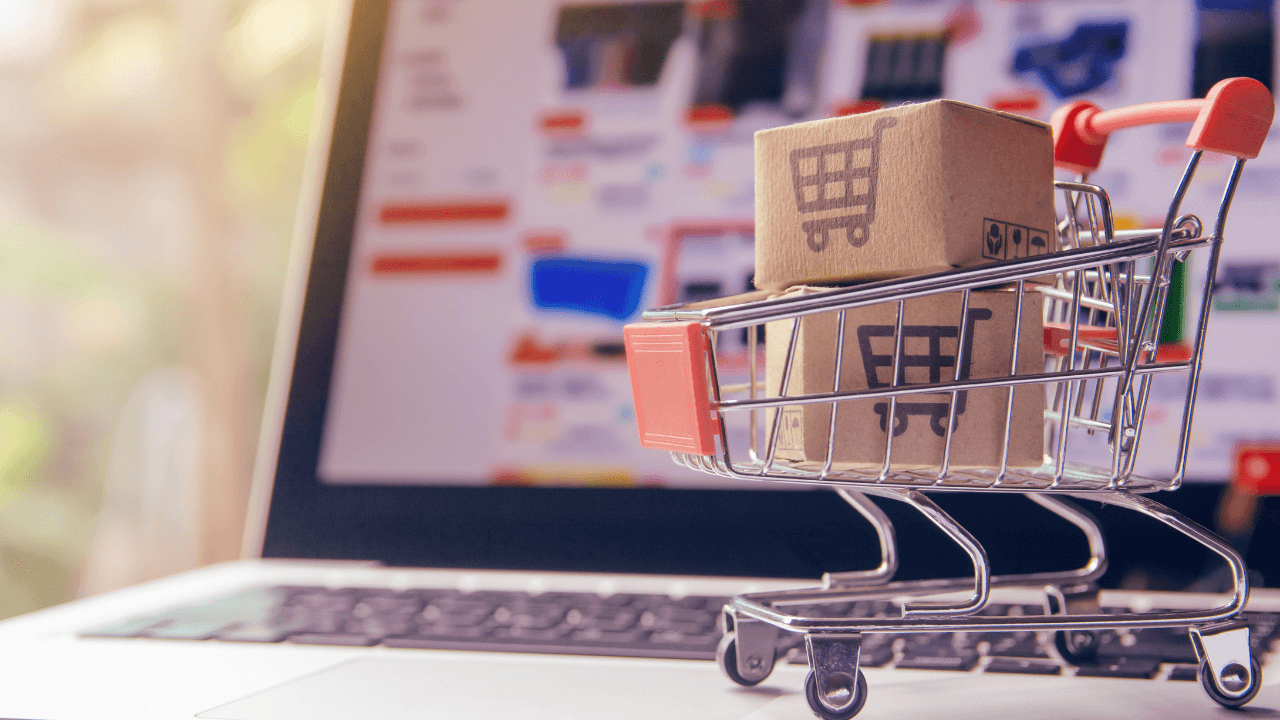Language:
How to Start an E-commerce Business

Did you know that a significant chunk of all retail sales globally are already online, and there’s room for you to participate?
E-commerce is booming, and it’s not just for big corporations anymore. Anyone can set up a successful online store with the right tools and knowledge.
If you’ve ever dreamed of being your boss and calling the shots, learning how to start an e-commerce business could be your ticket to financial freedom. It offers incredible flexibility, plus e-commerce businesses are naturally scalable.
Start small, selling a handful of products, and gradually expand your offerings.
The potential for profits is also pretty high.
But where do you even begin? To help you jump the queue and launch your ecommerce business hassle-free — doola ecommerce business formation services are here.
If you’d like to learn more first, this comprehensive guide will walk you through how to start an e-commerce business, covering essential steps like brainstorming product ideas, building your brand, setting up your online store, attracting customers, and more.
So buckle up. It’s time to turn your e-commerce dreams into reality!
How to Start an E-commerce Business in 7 Steps
1. Find Your Niche and Products
Choosing the right products to sell is the foundation of any successful e-commerce business. But with countless options out there, how do you narrow it down? Here’s how:
Spark Your Creativity
Let’s brainstorm! Start by thinking about your passions and hobbies.
Do you have a unique skill you could use to create handmade crafts or customize artwork? Maybe you know deeply about a particular product category — fitness trackers or sustainable home goods.
These passions can translate into a strong foundation for your online store.
✔️ Look for Market Gaps
Once you have some initial ideas, see if there’s actual customer demand for them — research online marketplaces and forums to see what problems people face.
Are there other underserved niches where you could offer a unique product or better customer service? Think.
✔️ Validate Your Ideas
Don’t jump in just yet! Market research is crucial to validate your product ideas.
Tools like Google Trends can show you search volume over time, helping you gauge customer interest.
Analyze your competitors — what are they selling? Where are their weaknesses? Can you offer a better product or a more engaging brand experience?
✔️ Money Matters
Now, let’s talk about profits! Even if there’s customer interest, make sure you can make money selling a particular product.
Consider factors like wholesale cost, competition level, and potential profit margins. Can you competitively price your products while still making a healthy profit?
By taking all these steps thoroughly, you can find a niche and products that are profitable and fulfilling to sell. This will set you on the right track for success as you learn how to start an e-commerce business.
2. Build Your Brand Identity

The next step is your brand identity. It is more than just a fancy logo — it’s the heart and soul of your online store. It sets you apart from the competition and tells your customers about you.
This might seem obvious, but choosing the right business name is crucial. It should be catchy, memorable, and easy to spell. Ideally, it should also hint at what you sell or your brand’s values. Think short, sweet, and something that rolls off the tongue easily.
After the name, think about it. Every successful brand has a story. What’s yours?
This isn’t just about your company’s history (though that can be part of it). It’s about the deeper purpose behind your business. Why are you passionate about these products? What problem are you solving for your customers?
Weave a narrative that connects with your target audience emotionally and builds trust and loyalty.
Next, how will you talk to your customers? Your brand voice should be consistent across all your marketing materials — from your website to social media posts. Is it friendly and casual? Sophisticated and professional?
Being sure of your brand voice will help you connect with your audience with authenticity.
Last but not least, your logo. It is the visual representation of your brand. Keep it simple and recognizable, and ensure it works well across different mediums (think website, print materials, and social media).
While you can find affordable logo design options online, consider investing in a professional logo designer for it to be truly unique and impactful.
3. Set Up Your Online Store

Now comes the exciting part: setting up your e-commerce store! This is your digital shopfront, where customers will browse your products, learn about your brand, and make a purchase.
Here’s what you need to know to build a user-friendly and successful online store.
Choosing Your E-commerce Platform
Think of your e-commerce platform as the engine that powers your online store. Many popular options are available, each with its own strengths and weaknesses. Popular choices include Shopify, BigCommerce, Wix E-commerce, and Squarespace.
Such platforms offer user-friendly interfaces that make setting up your store a breeze, even with no coding experience. They typically have built-in features like product management tools, shopping carts, and marketing integrations.
When choosing the platform that best suits your needs, consider pricing plans, features offered, and ease of use.
Designing a User-Friendly Website
Your website is the first impression you make on potential customers. It needs to be visually appealing and easy to navigate. Even if you’re not a web design pro, don’t worry!
Most e-commerce platforms offer a variety of pre-designed themes that you can customize with your brand colors, logo, and images.
Here are some key website design elements to keep in mind:
✅ Mobile-Friendly Design: Over half of all online shopping happens on mobile devices! Make sure your website looks good and functions flawlessly on all screen sizes.
✅ High-Quality Product Images: People are drawn to beautiful visuals. Invest in high-quality product photos that showcase your items from all angles and in good lighting.
✅ Clear Product Descriptions: Include product descriptions! Provide detailed information about each product, including features, benefits, and specifications.
✅ Simple Navigation: Visitors should be able to find what they’re looking for on your website easily. A clear and intuitive navigation bar is essential.
✅ Fast Loading Speeds: No one likes a slow website. Choose a reliable hosting provider and optimize your website images to ensure quick loading times.
Secure Payment Processing
Security is vital, especially when it comes to online transactions. Integrate a secure payment gateway with your e-commerce platform so customers can pay for their purchases safely.
Popular payment gateways like Stripe, PayPal, and Amazon Pay offer secure payment processing and fraud protection. Setting up a payment gateway is usually straightforward in your chosen e-commerce platform.
Following these steps and choosing the right tools, you can set up a user-friendly and visually appealing online store to convert visitors into customers.
Remember, your website is your online salesperson — make sure it’s working hard for you!
4. Source and Manage Inventory
Having the right products in stock at the right time is also crucial for any e-commerce business. Managing inventory well is a key aspect of understanding how to start an e-commerce business effectively.
You want to avoid getting stuck with too much material you can’t sell, but you also want to ensure you get all the popular items and satisfy customers.
Here’s a breakdown of different inventory management models, how to find reliable suppliers, and some key strategies to keep your stock levels healthy.
Choosing Your Inventory Management Model
There are several ways to approach inventory management in e-commerce:
Wholesale
This is the traditional model where you buy products in bulk from a wholesaler at a discounted price.
You then store the inventory yourself and ship it directly to customers. This offers greater control over product quality and branding but requires a more significant upfront investment and storage space.
Dropshipping
With a dropshipping business, you don’t hold any physical inventory yourself.
When a customer orders, you forward it to a third-party supplier, who then ships the product directly to the customer. It’s a great option for beginners learning how to start an e-commerce business with minimal upfront costs and no storage requirements.
Print-on-Demand (POD)
This model is ideal for selling custom-designed products like t-shirts, mugs, or phone cases. You partner with a POD supplier who prints your designs on products and ships them to customers.
It’s a creative and cost-effective model for those exploring how to start an e-commerce business with limited resources.
Finding the Perfect Supplier
The success of your e-commerce business also hinges on reliable suppliers who provide high-quality products at competitive prices.
Here’s how you can find the suitable suppliers:
- Online Marketplaces like Alibaba or Thomasnet
- Industry Trade Shows
- Online Reviews and Recommendations
Optimizing Your Inventory Management
If you’re figuring out how to start an e-commerce business, understanding inventory management is essential. Once you’ve chosen your suppliers and sourced your products, it’s time to develop strategies to keep your inventory levels in check.
Here are some key tactics:
- Demand Forecasting: Analyze historical sales data and industry trends to predict future demand for your products. This helps you avoid overstocking or understocking.
- Minimum Order Quantities (MOQs): Many suppliers have minimum order quantities (MOQs) — the smallest amount you can purchase. Negotiate MOQs that fit your budget and sales volume.
- Safety Stock: Maintain a buffer of safety stock for popular items to prevent stockouts due to unexpected demand surges or shipment delays.
- Regular Inventory Audits: Conduct regular inventory audits to ensure your physical inventory matches your online records. This helps identify discrepancies and prevent stock shrinkage.
- Inventory Management Software: Consider investing in inventory management software to automate tasks like order tracking, stock level monitoring, and reorder point calculations.
5. Shipping and Fulfillment
Fast, reliable shipping is an essential part of the e-commerce experience. After all, even the most impressive products lose their shine if they take forever to arrive or get damaged in transit. But there’s no one-size-fits-all approach to shipping.
The ideal strategy depends on product size and weight, customer expectations, and your budget. Along with this strategy, your aim should be to balance cost and speed.
Here are some standard shipping options to consider: standard shipping, expedited shipping, overnight shipping and free shipping.
Understanding shipping costs is also essential for setting competitive prices and ensuring profitability.
Most major shipping carriers offer online tools for estimating shipping costs based on package weight, dimensions, origin, and destination.
Choosing Your Fulfillment Option
Fulfillment refers to picking, packing, and shipping your products to customers. You can handle this in-house (if you have the space and resources) or outsource it to a third-party logistics (3PL) provider.
In-house fulfillment might be suitable for businesses starting small with low order volume.
You’ll need to invest in packaging materials, storage space, and potentially additional labor. Then, as your business grows, consider partnering with a 3PL provider.
They handle storage, picking, packing, and shipping, allowing you to focus on marketing and sales. 3PLs offer economies of scale, which can translate to lower shipping costs for you.
Having said that, the best fulfillment option depends on your business needs and resources.
Consider order volume, storage space availability, and budget constraints. You can also start with in-house fulfillment and transition to a 3PL as your business scales.
6. Market Your E-commerce Store

Effective marketing is the key to driving traffic to your store and converting visitors into loyal customers. But before diving headfirst into marketing tactics, take a step back and identify your ideal customer.
Who are you trying to reach? What are their interests, needs, and online behavior? Understanding your target audience helps you tailor your marketing messages to resonate with them.
Think about the keywords your target audience might use to find products like yours — through Search Engine Optimization (SEO). It is all about making your website content visible in search engine results.
By optimizing your website for search engines, you increase the chances of potential customers finding your store organically.
Creating high-quality, informative content is another fantastic way to attract and engage your target audience. Start a blog on your website or engaging newsletters and share informative articles and tutorials about your products.
Post engaging videos on social media platforms that showcase your products in action. The more valuable content you create, the more likely you are to establish yourself as an authority in your field.
Then, there are social media platforms like Instagram, Facebook, and Pinterest. These are goldmines for e-commerce businesses.
Use these platforms to showcase your products visually, share engaging content, run contests and giveaways, and connect with your audience on a personal level.
You can run targeted social media ads to reach a wider audience and attract potential customers.
For advertising, you can also consider using pay-per-click (PPC) platforms like Google Ads to drive targeted traffic to your website. With PPC, you create ads that appear on search engine results pages or other websites.
Pay only when someone clicks on your ad. This makes it a cost-effective way to reach those who are actively searching for products like yours.
7. Launch and Grow Your Business

Now comes the exciting part — launching your e-commerce business to the world! But before you hit the virtual “open” sign, here’s how you can ensure a smooth website launch and a positive user experience.
Launch Day Checklist
Test all website functionalities thoroughly, including product pages, shopping cart, checkout process, and payment gateway. Make sure everything works flawlessly on different devices (desktop, mobile, tablet).
Also, ensure your website loading speeds are fast across devices and internet connections.
Have clear and easily accessible return policies, shipping information, and FAQs on your website to build trust with potential customers.
Lastly, don’t launch in silence! Spread the word. Use your social media channels, email marketing campaigns, and influencer collaborations for this.
Once you’re up and running, always remember, exceptional customer service is the cornerstone of building customer loyalty. Respond to customer inquiries promptly and professionally across all channels (email, social media, phone).
Small gestures like handwritten thank-you notes or including free samples can also leave a lasting positive impression. Also, make it easy for customers to reach you by providing a variety of contact options, including email, live chat, and phone support.
Yes, mistakes happen. What matters is how you handle them. Resolve customer issues efficiently and fairly to turn a negative experience into a positive one.
Analyze and Optimize for Growth
Your e-commerce journey doesn’t end at launch. Use website analytics tools to track website traffic, conversion rates, and customer behavior. Analyze this data to optimize your website, marketing campaigns, and product offerings for better conversions and sales growth.
Do A/B testing for different website elements like product descriptions, call-to-action buttons, and page layouts to see what resonates best with your audience.
Remember, launching and growing a successful e-commerce business is an ongoing process.
By focusing on providing a smooth user experience, exceptional customer service, and continuous optimization based on data, you’ll be well on your way to long-term e-commerce success!
Launch Your E-commerce Business With doola

So there you have it! Launching an e-commerce business might seem daunting at first, but by following these steps, you’ll be well on your way to building a thriving online store.
Ready to turn your e-commerce dream into reality? That’s where doola comes in!
doola is an online incorporation and compliance service that can help you form your e-commerce business quickly and easily.
Schedule a free consultation with a doola expert today to discuss your e-commerce business plans and ensure you have the legal foundation for success!




